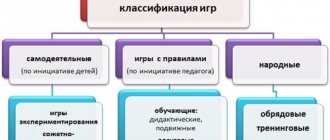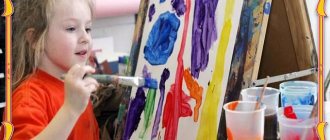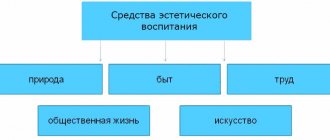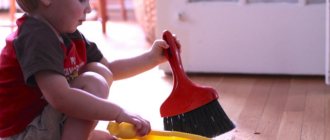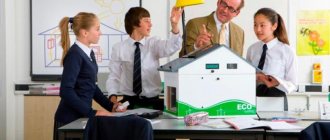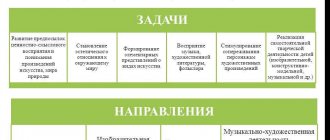Environmental education is an important component of the educational process in schools and kindergartens. Teachers organize their work in this direction both in the process of educational activities and in extracurricular activities. Forms, means and methods of environmental education are selected in accordance with the age of the children, the degree of their interest, and the natural environment.
Methods, forms and means of environmental education depend on the age of the children. The leading form of organizing work on environmental education is a lesson (class in a preschool educational institution). Experiences, experiments, observations, projects, the use of literature, conversations - those are the methods that the teacher uses in direct educational activities. In addition, in extracurricular activities. Extracurricular activities include excursions, holidays, themed leisure, and work with parents. All forms and methods can be used both in combination and separately.
Forms of environmental education
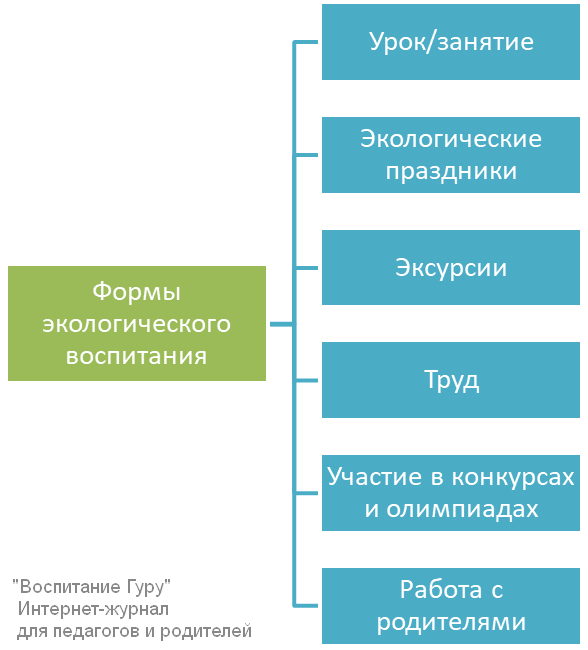
- Lesson . The most basic and most common form of work on environmental education of children is the lesson. He also classes (GCD) in kindergartens. In support of environmental education, such a subject as the surrounding world was created, which introduces children to living and inanimate nature, its laws, and the basics of environmental protection.
Lessons (activities) allow the teacher to develop children's knowledge about nature, taking into account their age characteristics. There are several types of classes:
- Initial informational. Such lessons (lessons) have an introductory function, that is, they introduce children to certain species (animals, birds, fish, etc.), their living conditions, natural phenomena, and basic concepts about the environment. The necessary material for such activities (lessons, conversations) are visual materials (demonstration aids, posters, films);
- Generalizing. Allows children to form general concepts about certain types and natural phenomena, the ability to identify their common features (senior preschool and primary school age);
- In-depth cognitive. Classes (lessons) that are based on previously acquired knowledge. Deepening what has already been learned, applying it in practice - such lessons are conducted in the form of a conversation, a quiz, or watching a video in class.
- Ecological holidays. Activities that are classified as extracurricular activities. They can be either timed to coincide with calendar holidays (Earth Day), or independent, invented by teachers. The purpose of such leisure is to evoke a positive emotional response in children, which in turn awakens interest in environmental problems. When drawing up an entertainment script, material that is already familiar to children is used.
- Excursions . Starting from the middle group of a preschool educational institution and ending with the middle classes of a comprehensive school, an excursion is one of the most effective forms of work on environmental education of children. And this is understandable. No matter how much we talk, no matter how many conversations we have, nature is an environment that can only be experienced by coming into direct contact with it, in a natural setting. The teacher conducts excursions in accordance with the requirements of the state educational program, previously indicating goals and objectives in the calendar plans.
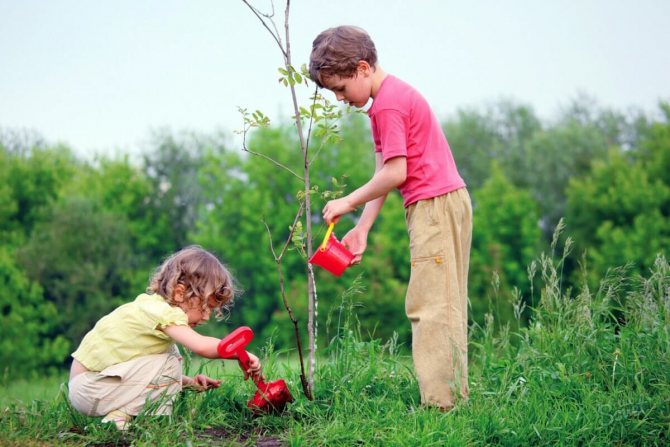
- Labor It would be strange not to indicate this form of direct combination of human activity with environmental protection. In kindergartens, this is caring for living corners, flower beds, small vegetable gardens, organized by educators for the purpose of environmental education of children. At school, this means cleaning the area, watering, caring for plants, and working on the school site (especially common in rural schools).
- Participation in school city competitions and olympiads. Such competitions are often held both by the schools themselves to strengthen motivation among students, and by the city administration. Site reviews, quizzes, olympiads - all this awakens the spirit of competition, and, as a result, provides significant motivation for environmentally oriented detail among children of primary and senior school age.
- Working with parents. A full educational effect is achieved when school and family act in the same direction. Therefore, working with parents is one of the most important forms of environmental education. Consultations for parents, participation in school events, experiments conducted by children together with their parents (at home, in the country, in the village), participation of parents in shows and exhibitions are techniques that are necessary for fruitful work.
Book by Nikolaeva S.N. environmental education of preschool children - methodology
Innovative technologies and methods of environmental education of preschool children in accordance with the Federal State Educational Standard for Education
Khupsarokova Nafiset Nurbievna
MBDOU No. 9, Maykop
Section
“Effective forms and methods of environmental education and upbringing, development of environmental culture of pupils and students”
Required technical means
: computer for showing presentations
contact number
Innovative technologies and methods of environmental education of preschool children in accordance with the Federal State Educational Standard for Education
CONTENT
Introduction
- Features of environmental education of preschool children in accordance with the Federal State Educational Standard for Education
- Innovative technologies and methods of environmental education for preschool children
- Innovative forms of working with parents on environmental education of preschool children
Conclusion
List of used literature
Introduction
It is no secret that today one of the strategically important issues in education is the environmental education of the younger generation. Since preschool education is the first stage in the educational system, it is especially important during this age period to pay attention to the emotional component. Emotionality, special sensitivity, openness and great interest in the natural world in a preschool child are fundamental factors for the beginning of successful environmental education in preschool educational institutions.
The most important condition for the implementation of educational areas provided for by the Federal State Educational Standard is the greening of the environment in preschool educational institutions, since the environment is the reality in which human development occurs. The modern environment of a child’s life does not provide him with the necessary spatial opportunities for activity.
A visual analysis of typical preschool institutions shows that they are equipped stereotypically, both in content and in terms of activity, and do not create conditions for greening the spatial environment, creating conditions for the formation of environmental ideas. Only through the efforts of the preschool team can a spatial environment be created for preschoolers to develop ideas about the diversity of nature, natural objects and phenomena, and an awareness of the need to protect nature.
From the point of view of environmental education, the environment in a preschool institution should create conditions for: the cognitive development of the child: experimenting with natural materials, observing objects of living and inanimate nature, increasing interest in natural phenomena; ecological and aesthetic development of the child (attracting attention to surrounding natural objects, developing the ability to see the beauty of the surrounding natural world); improving the child’s health (proper landscaping of the territory, creating conditions for excursions and outdoor activities); formation of the child’s moral qualities (creating conditions for daily care of living objects and communication with them; developing a desire to protect nature, fostering a sense of responsibility for preserving nature); formation of environmentally literate behavior (development of skills in caring for animals and plants, environmentally literate behavior in nature and at home)
1. Features of environmental education of preschool children in accordance with the Federal State Educational Standard for Education
The federal state educational standard for preschool education assumes an activity-based approach to determining the content and organization of the educational process for preschool children. Environmental education of preschoolers can be carried out in all educational areas. For example, the content of the educational field “Socio-communicative development” is aimed at mastering the norms and values accepted in society; development of emotional responsiveness, empathy, including in relation to natural objects; to form the foundations of safe behavior in everyday life, society, and nature.
The content of the educational field “Cognition” is aimed at the formation of primary ideas about the objects of the surrounding world, their properties and relationships (shape, color, size, causes and effects, etc.); about planet Earth as the common home of people, about the peculiarities of its nature, the diversity of countries and peoples; expanding children's horizons
The content of the educational field “Speech Development” involves familiarity with children's literature, including natural history.
The educational field “Artistic and Aesthetic Development” involves the formation of prerequisites for value-semantic perception and understanding of the natural world; formation of an aesthetic attitude towards the surrounding world as a whole.
The educational field “Physical Development” is aimed at developing the values of a healthy lifestyle in preschoolers.
The main goal of working with preschoolers on environmental education involves: developing in each child a belief in the need for a careful attitude towards nature; the desire for adequate perception of knowledge and development of skills in nature conservation; joining the world level of environmental culture. To achieve this goal, it is necessary to build a holistic system of environmental education, based on scientifically developed principles for creating environmental programs, taking into account the Federal State Educational Standard for preschool education.
Greening the developmental subject environment in educational institutions should contribute to the implementation of all components of its content: cognitive, moral and value-based and activity-based.
Thus, the interaction of preschoolers with nature in the process of environmental education in the light of the Federal State Educational Standard has its own specifics due to age characteristics and is based on an activity approach, since it is activity that develops the child’s psyche, motor activity and makes him physically stronger and healthier
2. Innovative forms and methods of environmental education for preschool children
Along with traditional forms and methods of environmental education, in my teaching activities (conversations, observations, reading literature), I also use innovative forms and methods. I will give examples of various innovative areas of environmental education for preschool children.
Ecological games
. An ecological game helps to convey complex natural phenomena in a more accessible form; development of cognitive abilities; clarification, consolidation, expansion of their ideas about objects and natural phenomena, plants, animals.
Games can be played with children both collectively and individually, making them more difficult depending on the age of the children. Complication should come through the expansion of ideas and the development of mental operations and actions. Didactic games are carried out during leisure hours, during classes and walks.
Contents of role-playing games
I give an ecological character: “Journey to the Forest”, “Journey to Neptune”, “Journey to the Moon”, “Zoological Store”, “Vitamin Lunch”, etc.
Puzzle games, experimental games, exploration games, meditation games
(“I am the Sun”, “I am the Rain”, “I am the Wind”, “Sun and Cloud” and others) give new impressions about the life and work of people, about the state of nature and its changes; awaken interest in nature and develop a value-based attitude towards it; form motives and practical skills for environmentally appropriate activities; provide opportunities for independence, initiative, cooperation, responsibility and the ability to make good decisions. In these games, children use their life experience and reflect what interests, excites, and pleases them.
An interesting game technique in working with children is receiving letters of complaints from residents of a living area, residents of a forest, garden, or vegetable garden. When children receive such a letter, they think about its contents, discuss various environmental situations, decide how they can help this or that living creature, how they need to preserve and protect the nature of their republic and the entire planet.
Game “Find out by advertisements”»
introduces the characteristics of animals and birds (appearance, behavior, habitat), develops logical thinking. Children listen carefully to the announcement and guess who it is about (animal or bird). Examples of advertisements:
1. Come visit me! I don't have an address. I always carry my house on me.
2. Friends! Anyone who needs needles, contact me.
5. Please wake me up in the spring. Better come with honey.
7. Somehow it became very boring for me to howl at the moon. Who will keep me company?
8. To the one who finds my tail! Keep it as a keepsake. I'm successfully growing a new one!
12. I can help kind but lonely birds find family happiness! Hatch my chicks! I have never experienced maternal feelings and never will. I wish you happiness in your personal life. Cuckoo!
The next method is Case – Technology
is an analysis of a situation or a specific case, a business game. Its main purpose is to develop the ability to analyze various problems and find their solutions, as well as the ability to work with information. Case technologies develop communicative competencies in those educational areas where there is no clear answer to the question posed, but there are several answers, and you need to find the correct answer by arguing your arguments. For example, a case photo or a case illustration “Is the child behaving correctly?” in nature?"
Business game “Good - bad”
improves children's knowledge about the phenomena of living and inanimate nature, animals and plants. I offer children different situations, and the children make conclusions, for example: “Is a clear sunny day in autumn good or bad?”, “It rains every day - is it bad or good?”, “Is a snowy winter good or bad?” “All the trees are green - is that good or bad?”, “All the birds on earth have disappeared - is that good or bad?” and so on.
Business game “Who is after whom?”
Shows children that in nature everything is interconnected. I invite one child to connect with a ribbon all the animals that hunt each other. Other children also help find the correct pictures of animals. You can suggest starting the game with a plant, a frog or a mosquito.
Business game “What will happen if ...?”
helps to learn what needs to be done in order to protect, preserve and enhance nature, develops the ability to draw conclusions and conclusions. For example: what will happen if one boy throws a lemonade can into the river? How about two? How about three? Are there many boys? What happens if one family brings an armful of primroses from the forest on the weekend? Two families? Five? What happens if one driver's car emits a lot of exhaust gases? Three cars? Half the city's drivers? What happens if you don't put out a fire in the forest?
Business game “Take care of nature.”
On the table or flannelgraph I place pictures depicting plants, birds, animals, humans, the sun, water, etc. I remove one of the pictures and the children have to tell what will happen to the remaining living objects if there is no hidden object on Earth. For example: we remove a bird - what will happen to the rest of the animals, to humans, to plants, etc.
In my work I also use game-based learning situations (IOS) with fairy-tale characters: “Pinocchio talks to children about trees”, “Vini the Pooh goes to the meadow for honey”, “Dunno gets acquainted with houseplants”, “Aibolit examines houseplants”, "Cipollino conducts experiments with onions." Game-based learning situations such as travel also awaken cognitive interest in nature. Travel is the collective name for various kinds of games involving visiting, traveling, and hiking. By visiting interesting places - forests, zoos, museums, farms, children gain new knowledge about nature in a playful way.
I also use dialogues with nature
- a method that is aimed at developing the child’s emotional sphere, sensitivity. Dialogues are carried out in various versions - “secret” (children communicate one-on-one with nature) or “open” (oral appeals, addressing the Sun, Wind, Tree).
The method of ecological identification
is identifying oneself with some natural object or phenomenon, a playful technique of “transforming” into images of animals, plants, and acting on their behalf. Having been in the role of any object or object of nature, the child begins to treat it with respect. For example, playing out the situation “I am a flower...”, “I am a broken branch...”, “I am an ant...”, “I am a stream” helps the child understand that a plant is a living being, it suffers when it is in pain.
All these methods and techniques help develop the cognitive, communicative, artistic and aesthetic skills of preschool children, contributes to the formation of environmental ideas, and develop the ability to reason, analyze, and draw conclusions.
2.2. Computer technology and multimedia presentations
When working with preschoolers, you often encounter a lack of information and visual material. In my work with children on ecology, I found a solution to it in the use of modern information technologies. One of the most accessible means of using computer technology in teaching preschoolers is multimedia presentations.
Unlike an adult, for whom it is enough to listen to an oral explanation, subsequently using logical thinking, to understand the meaning of the information, for children, the saying “it’s better to see once than to hear a hundred times” fits perfectly. A child, with his visual-imaginative thinking, understands only what can be simultaneously viewed, heard, acted upon, or evaluated the action of an object. This is why it is so important when teaching preschoolers to access the channels of information available to them.
In my work practice, introducing children to nature, I use a variety of materials: didactic pictures, reproductions of artistic paintings, photographs, videos, sound recordings (recordings of the voices of birds, mammals, the noise of the forest, surf, rain, wind, etc.); in which children become active rather than passive objects of pedagogical influence.
I actively use multimedia presentations, either ready-made or I prepare them myself. On the sites https://planetadetstva.net/ - Online magazine, https://www.moi-detsad.ru/ - Everything for kindergarten, https://dohcolonoc.ru/ - Website for kindergarten teachers you can find many ready-made presentations on environmental topics, which I use when conducting classes. Modern digital technologies and the Internet helped me collect rich illustrative and informational material about plants, animals, and natural phenomena. Using a computer helped me significantly change the subject-spatial environment in the group. Presentations “Natural attractions of Adygea”, “Red Book of Adygea”, “Rules of behavior in nature” have been prepared, which are used in classes.
In the formation of environmental concepts, I use interactive resources on ecology for preschoolers. For example: interactive game
“Constructing environmental signs.
Features of the forest." Using the resources of the resource, each child can independently create their own model of an environmental sign (permitting, prohibiting, warning) and subsequently use it in an educational game dedicated to the inhabitants of the forest - animals and birds, forest plants, mushrooms and berries.
Interactive game “What grows where?”
where you need to correlate the various fruits of plants that are familiar to all of us: various fruits, berries, vegetables, cereals, mushrooms with images of where they could grow.
Modeling method.
Modeling is based on the principle of replacing real objects with objects, schematic images, and signs. The purpose of modeling in environmental education is to ensure the successful acquisition by preschoolers of knowledge about the characteristics of natural objects, their structure and relationships.
In the environmental education of preschoolers, different models are used: subject models - interactive toys depicting animals (barking dogs, meowing cats, pecking hens and chicks, etc.). The most common subject model is the globe. It allows children of senior preschool age to have a basic geographical understanding of the planet, which we ourselves made with the children from a simple ball and use it to mark different objects on it. Another traditional model in our kindergarten is an aquarium with fish, which imitates a natural reservoir and is a model of an ecosystem.
When making and while working with a layout or model, children describe, compare, talk about various phenomena and objects of nature, reason, thereby expanding their vocabulary. This method creates favorable conditions for the sensory development of children: working with models, in the manufacture of which materials of different texture, quality, and shape were used, promoting the development of external senses, activates fine motor skills of the hands.
We also made a “Natural World” model with the children. To create a natural model, children are offered a variety of natural materials (cones, twigs, pebbles, leaves, dried flowers, etc.), waste material (corks, lids, pieces of fabric, etc.), substitute material (ribbons, sticks, grains, etc.). .), this allows the child to independently create a model of the natural world “Water and Underwater World”, “Forest”, “Seasons”, etc.
Preschoolers’ knowledge of natural phenomena or the properties of natural objects can also occur through practical modeling, i.e.
experimentation. Using substitute objects, children draw conclusions about why fish have a streamlined shape, why animals have protective colors, and why predators need claws.
Another type of modeling is graphical
, which helps preschoolers trace patterns of changes in growth, in the development of living beings, changes in the seasons, and more. For example, the phenological calendars of nature that we keep in the group. It provides a graphical representation of the changes and signs of the seasons, temperature changes, precipitation at different times of the year, etc. In different age groups we fill out a bird watching calendar, a calendar for the growth and development of onions and beans.
Modeling (subject, graphic, practical) forms a deep and meaningful knowledge of natural phenomena, helps prepare preschoolers for school and maintain continuity in education in kindergarten and primary school.
help to successfully solve the problems of environmental education and training .
Mnemonics is a technology for developing memory, a set of rules and techniques that facilitate memorization. An example is the familiar phrase “Every Hunter Wants to Know Where the Pheasant Sits,” which helps to remember the colors of the rainbow. It is better to practice mnemonics with children 4-5 years old, when they have already accumulated a basic vocabulary, using algorithms for the processes of caring for indoor plants, planting seeds, caring for aquarium fish, etc. Training is built from simple to complex. We begin our work with the simplest mnemonic squares, then move on to mnemonic tracks, and later to mnemonic tables. A mnemonic table is a graphic or partially graphic representation of natural phenomena, some actions, characters in a fairy tale, that is, you can draw what you see fit. But depict it in such a way that what is drawn is understandable to children. An example is a mnemonic table: “The Journey of a Droplet”
For children of primary and secondary preschool age, it is advisable to give colored mnemonic tables, since they retain individual images in their memory: a Christmas tree is green, the sun is yellow, a berry is red. Later you can complicate it or replace it with another screensaver - depict the character in graphic form. For example, a fox consists of an orange triangle and a circle, a wolf is a gray triangle, the sun in summer is a full yellow circle, and in the cold season it is a yellow semicircle, the wind is warm in summer, these are red arrows, and in winter there are blue arrows, etc. Along with the existing mnemonic tables, I invite the children to draw their own tables, and the children successfully cope with this task.
Design and research activities
also part of my work on environmental education and parenting. Preschoolers are born explorers. This is the age when a child wants to know everything, he is interested in natural objects, phenomena, and relationships in nature. Organizing design and research activities of preschoolers based on environmental material will allow teachers to form key competencies in the child: the ability to see a problem, search and find information, work in a group, talk about the results, reflect, compare, answer questions, draw conclusions, establish a cause-and-effect relationship .
The subject-spatial environment in my group also contains materials for experimental research activities: containers for experimentation; magnifying glasses for viewing different objects in enlarged form; materials for experimental games with ice, water, snow (paints, salt, sugar, soap, plastic cups); seeds for planting and germination; (beans, peas, corn, etc.); earth, clay, sand.
We conducted a series of experiments with air with the children: “Catch the air”, “Air moves”, “Air has weight”, “Air is lighter than water”, “Air has no smell”, using laboratory glassware, scales, containers for playing with water of different volumes and shapes; natural material: pebbles, clay, sand, shells, bird feathers, tree leaves, seeds, etc.; medical materials: pipettes, flasks, measuring spoons, other materials: mirrors, balloons, sieve, candles.
The project “The Adventures of a Droplet” about the properties of water is of great interest to children, during the implementation of which we became acquainted with the properties of war through simple experiments. When implementing the “Garden on a Windowsill” project, in order to bring children to the conclusion about the need for moisture for plant growth, seeds were germinated in two saucers (one empty and one with damp cotton wool). To lead children to the conclusion about the need for heat for plant growth, place two identical plants in different conditions: one in a warm place, the other in a cold place and watch their growth.
One of the projects successfully implemented in my group is the “Let's clean the planet from garbage” project. We started working on the project by cleaning the territory of the kindergarten. We put all the garbage - plastic bottles, metal cans, paper, pieces of glass, plastic bags - into a bucket and took it to the trash cans. After talking with the children, we decided to conduct an experiment - bury the found garbage in the ground and see what happens to it after a while. The garbage was buried in prepared pits with specific markings. The children waited with great interest for the moment when they could dig up the hidden garbage. Before digging the holes a month later, we put forward different hypotheses about what could happen to the buried garbage, then, having dug it up, we compared the coincidence of the hypotheses with what happened in reality.
The guys saw that practically nothing happened to plastic and glass containers. Accordingly, we conclude that such waste cannot be thrown into nature, since it will be stored for a long time and spoil the surrounding nature. Then they made a propaganda poster on the corresponding topic and a drawing competition “Save our nature!”
Conducting experiments does not always require a specially equipped laboratory. Many experiments can be carried out while walking. This is how we determine air purity: prepare three identical 15x15 cm cardboard squares, thickly coat them with Vaseline on one side. And during a walk, place them on the territory of the kindergarten: the first one is not far from the roadway, the second one is near the walking area, the third one is deep in the territory, in the green zone. Leave the cardboards for 2-3 days and then compare which one has more dust on it. Children conclude that the air is not equally clean everywhere. Children are very impressed by this experiment.
As a result of using such forms and methods of environmental education, I can note that children have become more attentive. He learned to think logically, reason, compare, generalize, and identify essential features of objects and natural objects. Children can apply the knowledge acquired through new innovative forms when conducting experimental research activities. The children are happy to play “ecologists”, “scientists”, “laboratory assistants”, and understand in practice the dangers of garbage to the environment.
Children actively began to participate in environmental events and holidays, consciously understanding the need to protect nature and the Earth from destruction. desire for active environmental protection within the kindergarten and city. Children have rallied with their parents, who are our reliable helpers in the environmental education of their children.
Environmental actions in our preschool
take place throughout the academic year. During the events, preschoolers receive natural history knowledge, develop environmental culture skills, and an active life position. The promotions serve as good environmental propaganda among the parent community. Children see the attitude of their parents, the organization of the event and participate in it themselves. The group implemented the campaigns “Good winter for birds” (feeding wintering birds), “Christmas tree - green needle”, “Close the tap tightly so that the ocean does not leak!” (March 22 – International Water Day), “Let's decorate the planet with flowers” (the campaign starts in April, on the Earth Day holiday, when children sow flower seeds).
And most importantly, during environmental actions, children are shown and given the opportunity to improve and correct the consequences of people’s environmentally illiterate actions, since the result of any action is the productive activity of children.
3. Innovative forms of working with parents on environmental education of preschool children
We solve the problem of developing an environmental culture with the help of parents. Parents are invited to classes and celebrations with environmental content, participate in environmental actions, in the creation and replenishment of the subject-spatial environment, in the improvement of areas on the territory of the kindergarten. Parents and children conduct experiments and research, filling out nature calendars, observing the habits of animals, growing plants, and conducting simple experiments with natural materials.
At the present stage, environmental education must be carried out jointly with parents, they are the first educators in a child’s life. In order to identify the hobbies of adults and children, and the attitude of parents to the problem of environmental education, I conduct a survey. To help parents, an “Ecological stand” is set up, where articles, poems, riddles on the topic, signs, word games are placed for learning and practicing with children at home. Participation in competitions, entertainment, and exhibitions has become a good tradition in working with parents.
Thematic booklets are issued for parents: “Rules for the safety of children outdoors in summer”.
“Everything about proper nutrition for children”, “Our vitamin friends”, “Outdoor games while walking”, “A clean city is our city”, consultations are held
“
Computer.
Benefits and harms for your child”, “Home ecology”, “How to use a computer for the development and education of children?”, “Raising children’s safe behavior in nature” ,
“Basic rules of behavior in nature”
,
“Protection against ticks.
How to remove a tick. Safety rules for children” ,
“On a walk in the summer”
.
Parent meetings are held in non-traditional forms: workshops, parent lectures, family clubs.
Thus, by creating an innovative developmental subject-spatial environment with the integration of educational areas in the conditions of the Federal State Educational Standard, the main goal of environmental education is achieved - to form in children a holistic view of nature and the place of man in it, environmental literacy, the ability to love the world around us and treat it with care.
Conclusion
In the process of work, the following changes were noticed: children noticeably expanded their ecological ideas, their ability to establish cause-and-effect relationships; interest in natural objects and phenomena has increased, as well as an emotional reaction to the harmful influence of man on nature, a desire has appeared to comply with the norms and rules of behavior in the environment, aimed at preserving the values of nature, and interest in the nature of one’s city and republic has appeared.
Thus, it is clear that these forms and methods of environmental education for children in preschool educational institutions and in everyday life are quite effective. Well, the most important thing in environmental education is the personal conviction of the teacher, the ability to interest and awaken in children, educators and parents the desire to love, cherish and protect nature.
Thus, we can conclude that one of the most important conditions for the implementation of the tasks of environmental education of preschool children is the correct organization and greening of the developing subject-spatial environment, which contributes to the cognitive development of the child; environmental and aesthetic development; formation of environmentally literate behavior; greening various types of activities.
List of sources used:
- Order of the Ministry of Education and Science of Russia dated October 17, 2013 No. 1155 “On approval of the Federal State Educational Standard of Preschool Education” (Registered with the Ministry of Justice of Russia on November 14, 2013 No. 30384) [Electronic resource]. – Access mode: https://www.rg.ru/2013/11/25/doshk-standart-dok.html
- Kulikovskaya, I. E. Children's experimentation [Text] / I. E. Kulikovskaya, N. N. Sovgir. – M.: Publishing House of the Pedagogical Society of Russia, 2011. _ P.79.
- Makhaneva M.D. Ecological development of preschool children: A methodological manual for preschool teachers and primary school teachers. - M.: ARKTI, 2004. - 320 p.
- Makhaneva, M. D. Ecology in kindergarten and primary school. Methodological manual [Text] / M. D. Makhaneva. – M.: TC Sfera, 2010. – P. 171.
- Nikolaeva, S. N., Komarova I. A. Story games in environmental education of preschool children. Game-based learning situations with toys of various types and literary characters: A manual for pre-school teachers. - M.: Publishing house GNOM and D, 2005.
- Ryzhova N.A. Environmental education in kindergarten // First of September. - 2005.- No. 17.- P.11-15.
- Tantsyreva L. A. The project method as an innovative way of environmental education of preschool children [Text] - Cheboksary: CNS "Interactive Plus", 2015. - P. 122–125. – ISBN 978-5-906626-69-1.
8. Citymova S.S. Works of Adyghe poets and writers for children: collection - Maykop: RIO RIPO "Adygea", 1997.-p. 244: ill.
- Khavdok S.A., Huth S.H., Huth N.H. Golden Chest: Reader for kindergartens - In the Adyghe and Russian languages. – Maykop: Adyghe. rep. Book Publishing house, 2011.-416 p.
6
Methods and techniques of environmental education
Environmental education within the framework of the state educational program is an important part of the overall pedagogical process. As in any process, teachers try to use all the methods and techniques of education available to them.
Visual methods
As they say, it’s better to show once than to tell a hundred times, especially when it comes to children and their relationship with nature. In environmental education, visual methods are:
- Observation. It is always planned and purposeful. Observation has an object, a goal, and a time frame. The purpose of observation may be the causes of animal behavior, changes, development of living and inanimate objects, establishing and changing the properties, qualities, structure and appearance of the observed object or phenomenon. Observations can be carried out in small groups or the whole class at the same time, within and outside of educational activities. S.N. Nikolaeva, the author and developer of the system of environmental education in preschool educational institutions, pays great attention to observation as one of the most effective methods in this area of education.
- Illustrative and visual material. Books, illustrations, flashcards, films, videos, photographs and paintings - all this is illustrative material with which the teacher has the opportunity to introduce children to those natural phenomena (objects) that are not available for observation in natural conditions.

Practical methods
Practical methods are necessary to fully integrate children into environmental culture.
- Modeling. The modeling method is well suited for children in primary and secondary school. It represents the replacement of real objects (phenomena) with the help of diagrams, signs, figures or images. Modeling helps children create a general understanding of the object being studied.
- Experiences and experiments. Experience in environmental education is observation of the object being studied in conditions specially created for this. The experience must have a purpose and purpose. The course of the experiment must be thought out, as well as technologies and means. The experience itself is logically completed verbally or in writing.
- Ecological games. Didactic, mobile, board or verbal - a game is an introduction, cognition and consolidation of material. Play, as a method of environmental education, is widely used by kindergarten teachers, since in preschool age play is the leading activity .
Short-term environmental projects in older groups of kindergartens
Verbal methods
By verbal methods we mean conversations, stories, analysis of what we read or saw. Verbal methods are almost always supported by visual ones. A conversation always precedes any game, experiment, or observation. Conversation accompanies any other method.
One of the verbal methods is reading fiction. This can be either special environmental literature recommended by the curriculum, or works of classical writers. Many authors paid attention to the problems of nature, wildlife, and environmental protection.

